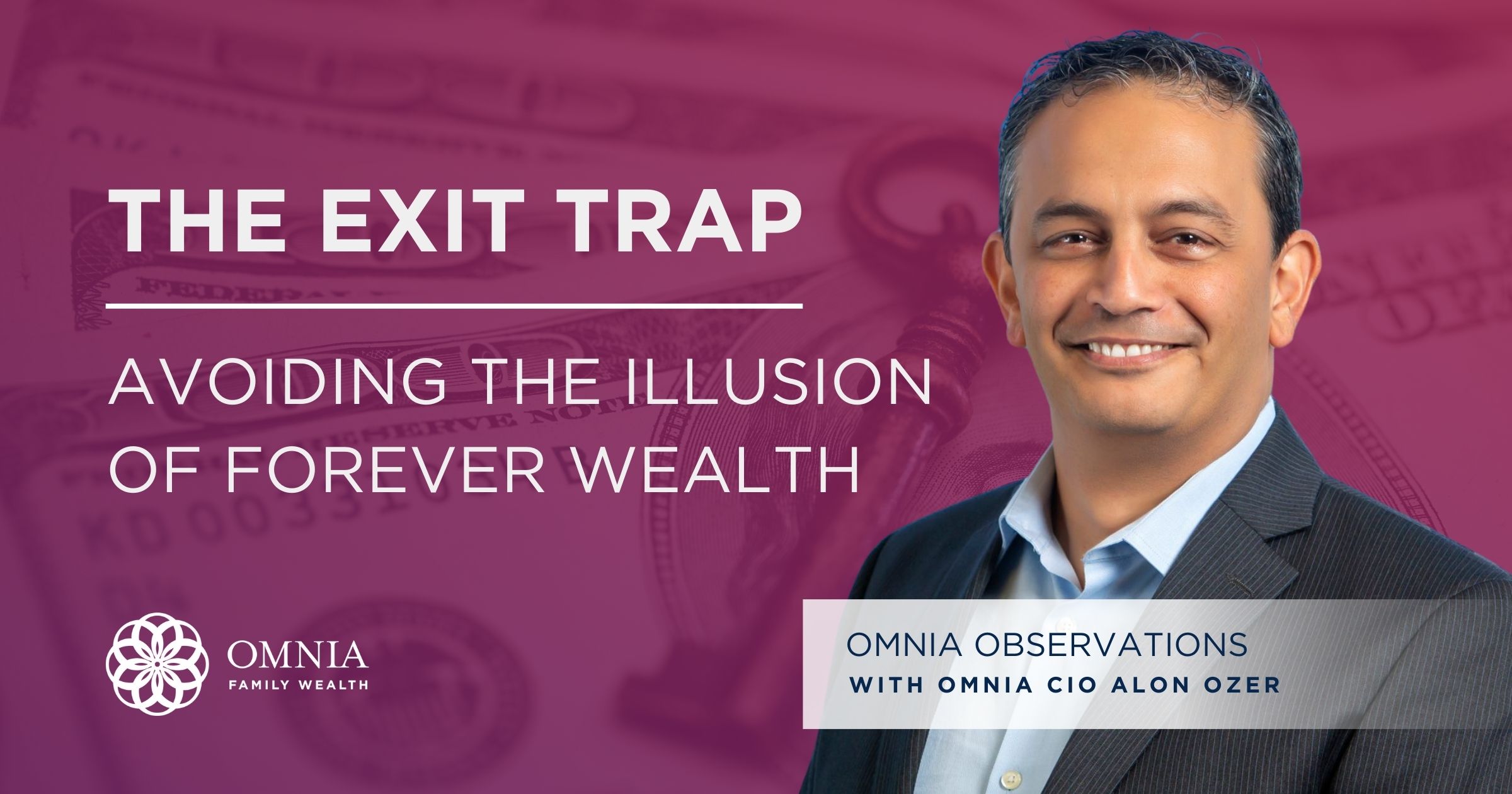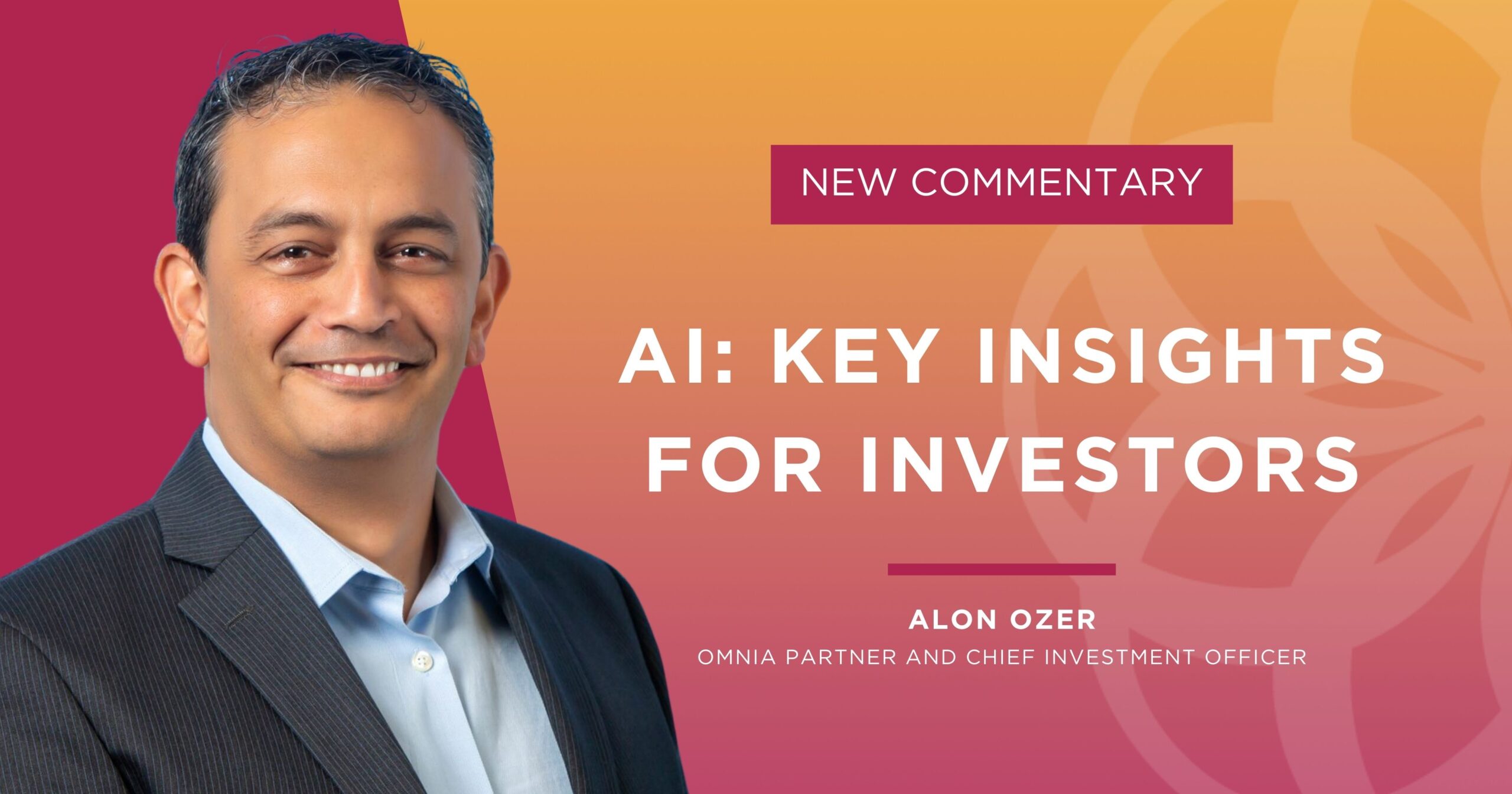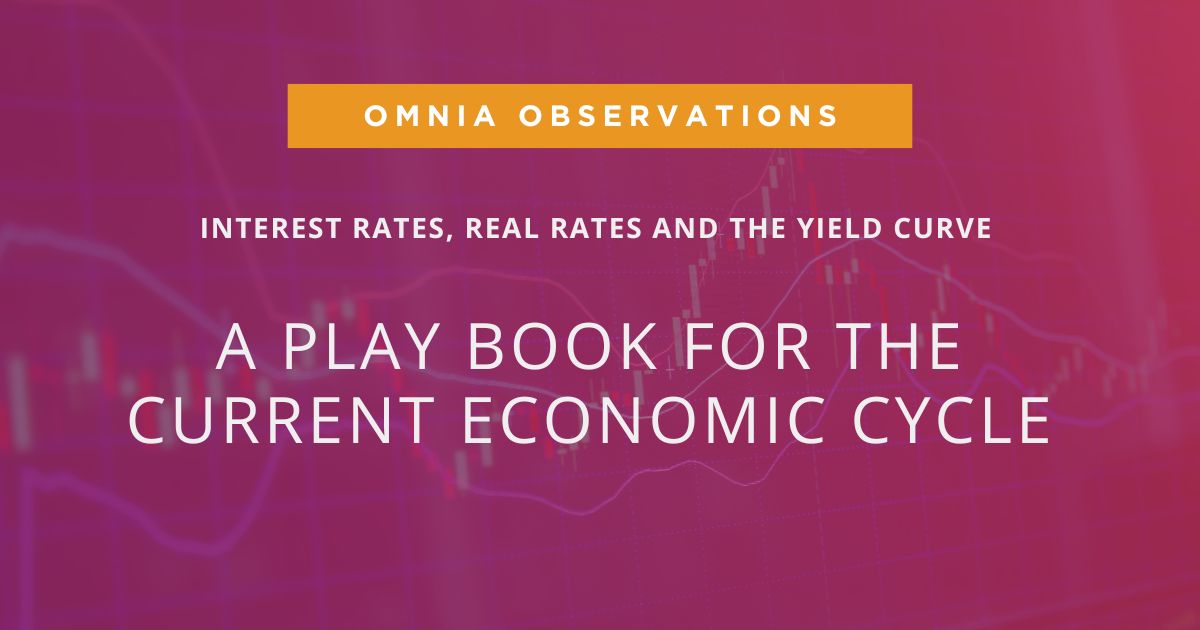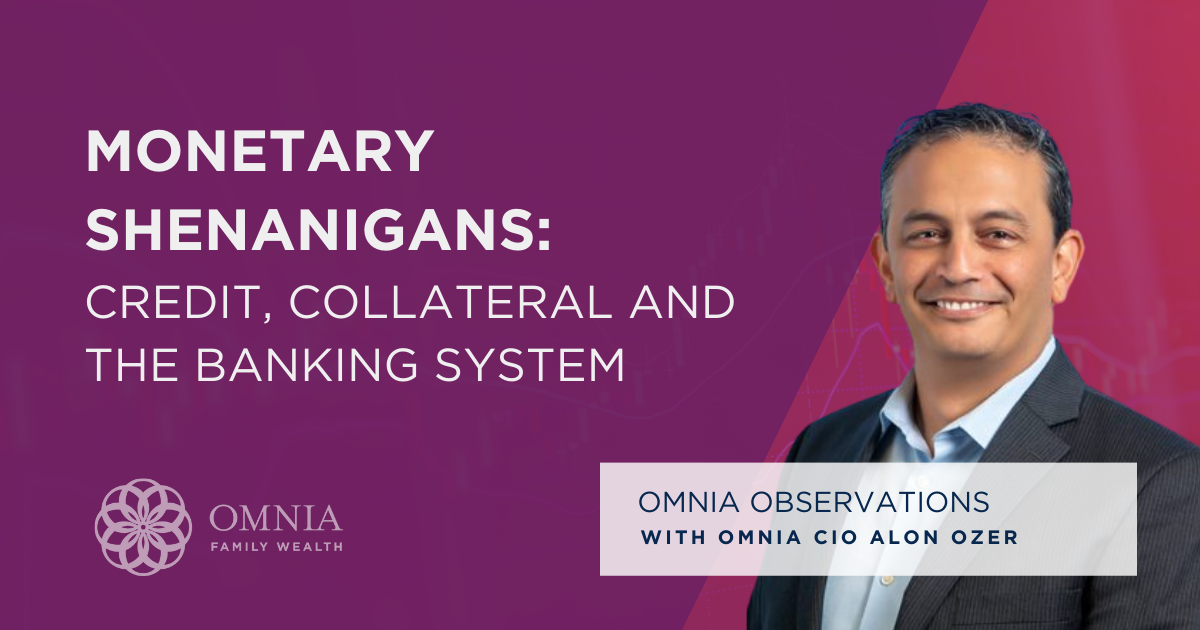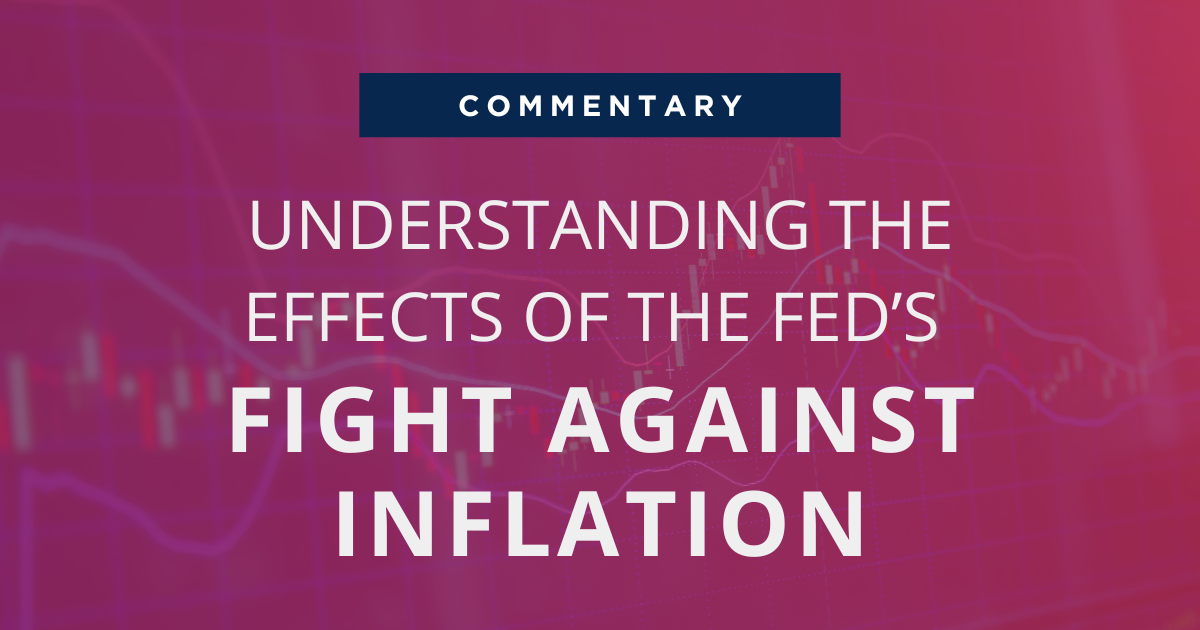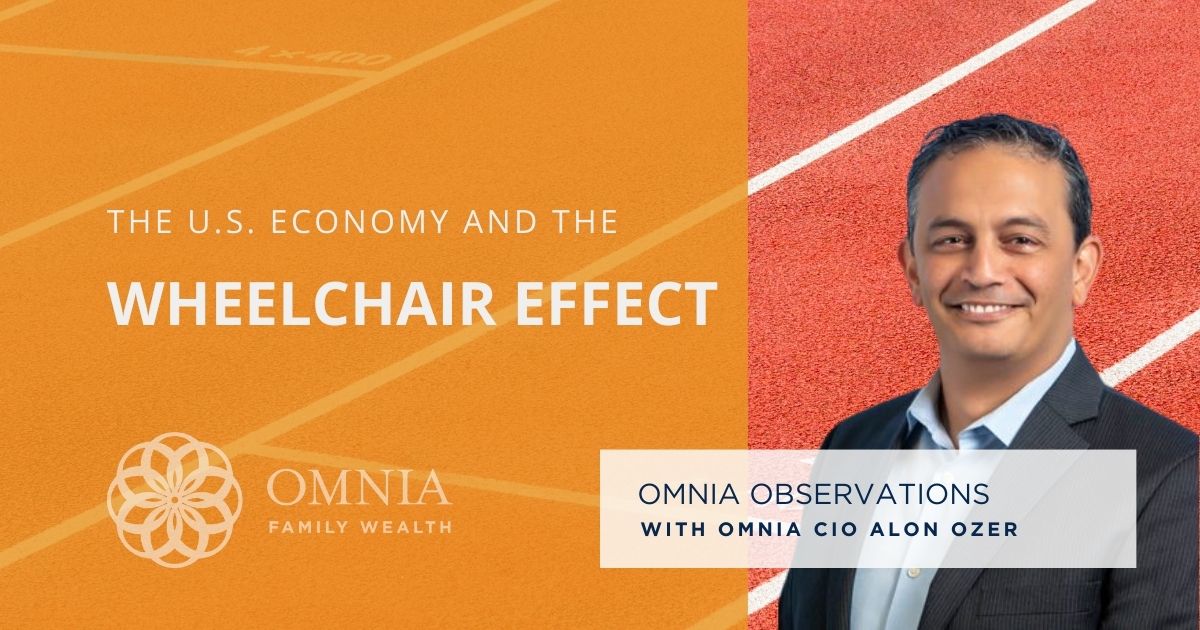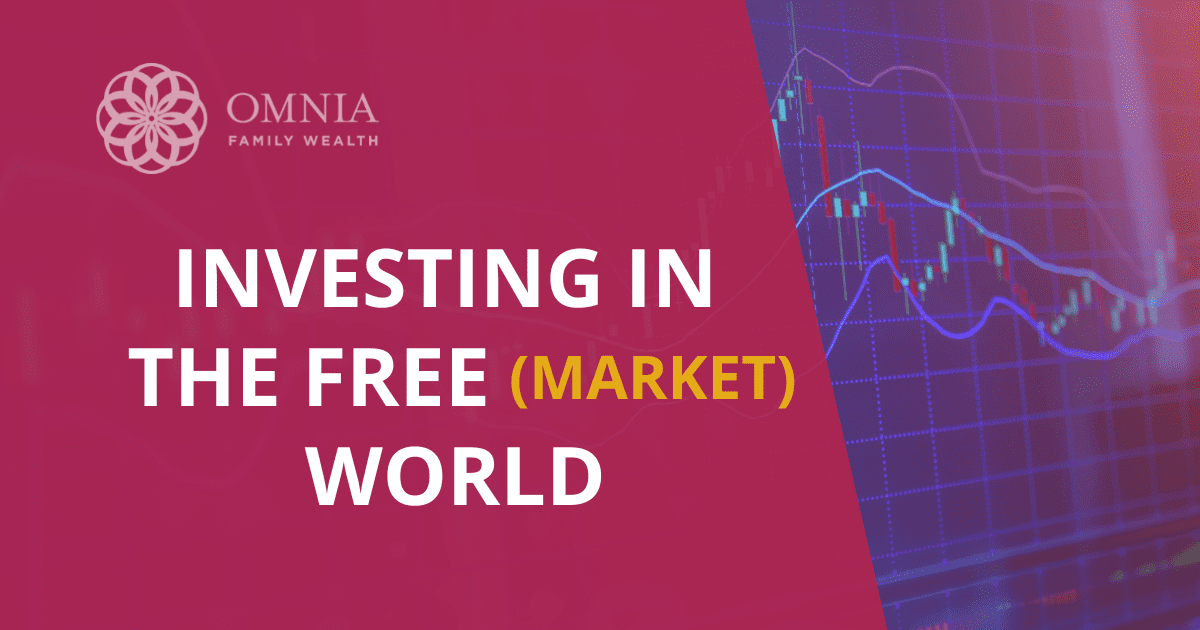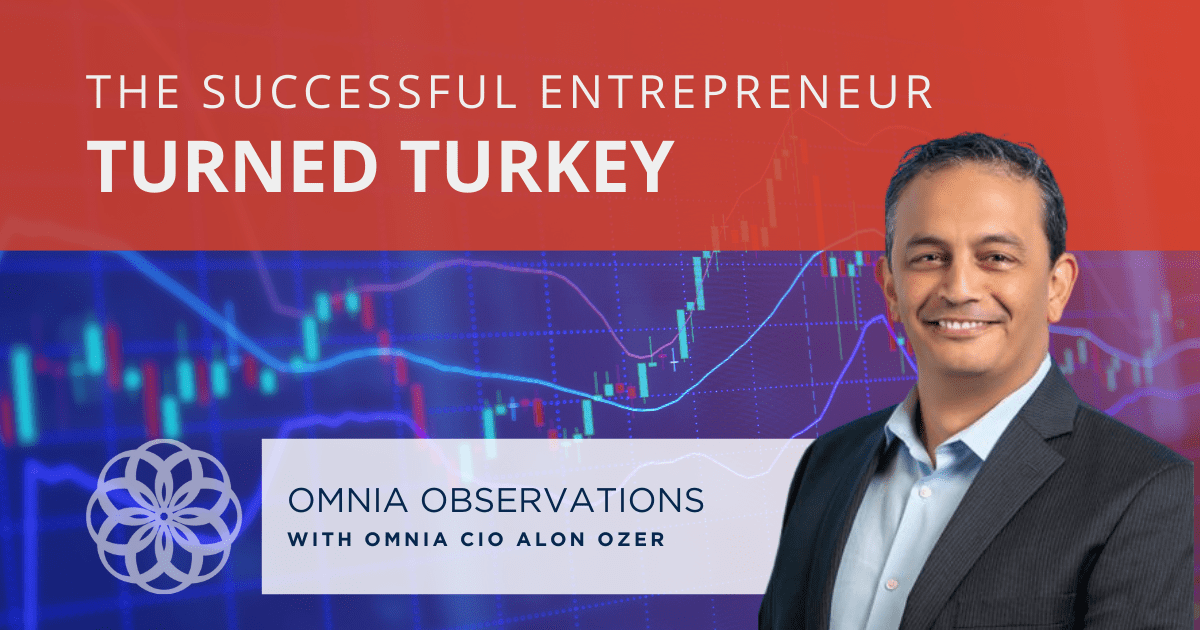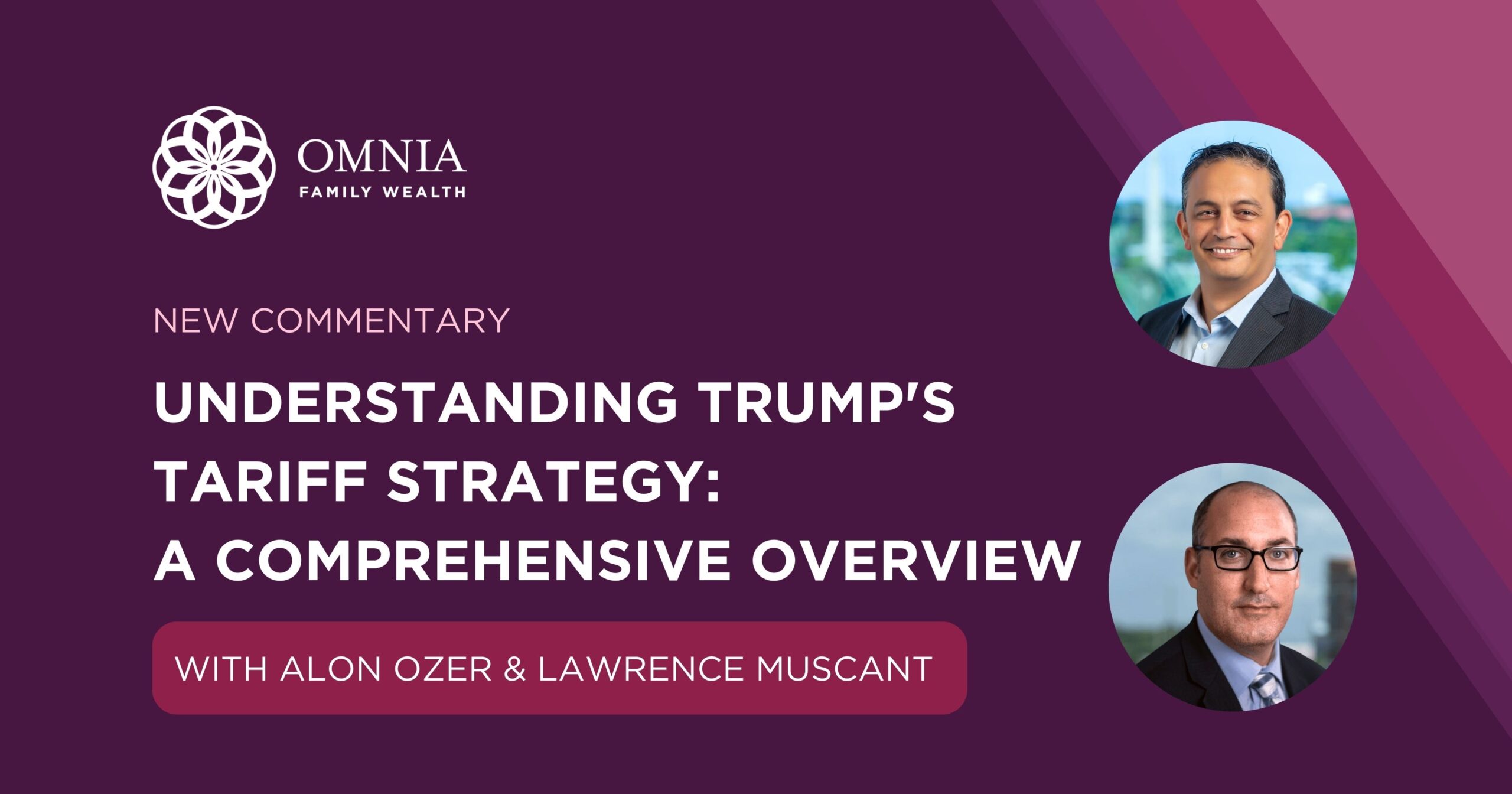
Managing Long-Term Capital: A Few Best Practices
The recent market volatility has made many investors anxious (and sometimes panic). It has also given them the opportunity to give additional thought to the construction of their portfolios. Sharp moves in markets will reveal the weak points in portfolios, and these rare events are both a wakeup call and an opportunity for investors to reassess their levels of risk, their portfolio construction and objectives. In other words, it is an ideal time to understand how you are invested and why. We have found this process not only helps investors sleep better at night but also helps them recognize opportunities amid the chaos.
When thinking about managing long-term capital, I can draw many parallels between managing an endowment fund and managing family wealth. Many of the methodologies, practices and processes I developed for the endowment fund I managed for many years I also use to benefit families here at Omnia. It turns out that how our families are invested and why is not unlike how some of the large endowments are invested, often to address similar goals and challenges.
Challenge #1: Conflicting Timeframes
In an endowment, each year, ideally 5% of the endowment’s assets are distributed to support the organization’s day-to-day activities. At the same time, there is a focus on growing and preserving the real value of the wealth for generations to come. Practically speaking, this means achieving long-term returns that outpace the 5% distribution plus inflation. This profoundly simple concept is very important, because it materially changes the construction of the portfolio, in terms of asset allocation, the assets you invest in, the diversification level and the portfolio’s liquidity profile.
Like endowments, families must be able to support their day-to-day operations and objectives but also ensure future generations are taken care of. Investing on behalf of family members who are not yet born is hard to comprehend, but yet, this is exactly how we think when managing intergenerational wealth. Our goal is always to preserve the real value of wealth accumulated over many years of hard work and support short-term distributions for a very long time.
Challenge #2: Long-Term Portfolio Construction and Planning
Portfolio construction should be a process. Rather than chasing a few 10x investment opportunities, the process must be sustainable and repeatable, focused on lowering volatility and thereby enhancing long-term returns. We review new investment opportunities on a daily basis, and many times, we pass on even the most compelling opportunities because they do not fit our specific investment criteria. We believe sticking to a long-term investment strategy is critical. Staying the course, even when faced with market swings and investment trends, has proven to be successful over time.
Best Practice: Invest, Don’t Speculate
Without a process driven by an objective view on the most important aspects of investing, such as asset valuations, risks in markets, macro factors, market cycles and geopolitics, investing becomes speculating.
Investing for many years brought me to realize how much randomness there is in markets that we just can’t explain, often not even in hindsight. Trying to find an explanation for what happened in the short term is usually a waste of time. Avoiding the trap of randomness and building discipline requires a robust investment process for assessing opportunities and risks, portfolio rebalancing, tax harvesting, and of course, decision making. The process has to be repeatable and understandable to everyone on your team. But most importantly, it has to evolve over time. We cannot assume that what worked in the past will continue to work in the future (i.e. 60/40 stocks and bonds portfolios).
Best Practice: Use Alternative Investments
When building portfolios, for endowments and families alike, it is key to find sources of returns that are not dependent on the same factors. For this reason, many investors turn to alternative investments to achieve greater diversification and soften portfolio volatility, especially as equity and fixed income markets become more correlated over time. Until recently, alternative investments were almost exclusively accessed by endowments, as well as large institutions. Now, platforms are increasingly offering independent advisors access to managers and strategies previously subject to very large minimums and lockups. But like any investment, it is important to consider what role a particular alternative investment plays in the overall portfolio and to conduct thorough manager research.
Best Practice: Accept That You Will Be Wrong at Times
Long-term investing does not always agree with the short term and can often conflict in terms of asset pricing. This short-term pricing disconnect can make an investor appear “wrong,” even if an investment decision is prudent in the long run. A fear of looking wrong can drive many bad decisions. If we fear looking wrong or missing out and, as a result, chase performance, it is unlikely we will have the desired outcome. This cycle of fear and greed is the biggest enemy to successful long-term capital management.
Best Practice: Risk Management
For endowments and families alike, risk management is one of the most important aspects of investing. But it is also one of the most misunderstood. Because risk management can be subjective at times, it’s important to be defined in advance. While this topic requires a lengthy explanation to properly understand it, in a nutshell, we view it in two timeframes: short and long.
In the long term, we use risk management to actively identify and protect against long-term tail events, loss of principal and eventual disruption to a family’s lifestyle. In the short term, we use risk management to monitor whether or not individual investments are playing their expected role in the overall portfolio.
Risk management is an integral part of the investment process and one of the main contributors to strong long-term performance.
Best Practice: Ensure Objectivity and Alignment of Interests
It may sound basic, but it is surprisingly rare to find objectivity, particularly in large wire houses where the advisors are compensated on the sale of “products.” Most endowments are not subject to the same conflicts of interest that families are. Endowments make investment decisions based on the goals and financial circumstances of the non-profit for which it was created. In the same way, families should follow investment advice based on their interests and goals.
It is our belief that families deserve the same objective investment advice that endowments receive, and the independent advisor model can help mitigate this risk and ensure a family’s investments are truly serving their best interest.
Watching Paint Dry
Most advisors hate to admit it, but managing an endowment and family’s capital is often like watching paint dry. With 90% of the time assessing risk, markets and opportunities, and only 10% of the time managing the portfolio, it can seem like a portfolio manager is not “doing enough.” From decades of experience, we know that activity for activity’s sake can lead to poor decisions and results.
This approach requires discipline on both sides of the equation: the advisor and the family. The advisor can’t feel the pressure to show activity only to justify his existence, and the family needs to understand that prudent portfolio managing doesn’t require many transactions; in reality, it can be the opposite.
This reminds me of an old joke about two piano students, one is playing a complicated symphony, and one keeps hitting the same key over and over again. When the teacher asked him why he’s not playing like the other student, he replied that the other student is still looking for the right key, but he already found it!
Click here to download the article.
Important Information
Omnia Family Wealth, LLC (“Omnia”), a multi-family office, is a registered investment advisor with the SEC. This commentary is provided for educational and informational purposes only. It does not take into account any investor’s particular investment objectives, strategies, tax status, or investment horizon. No portion of any statement included herein is to be construed as a solicitation to the rendering of personalized investment advice nor an offer to buy or sell a security through this communication. Consult with an accountant or attorney regarding individual tax or legal advice.
Advisory services are only offered to clients or prospective clients where Omnia Family Wealth and its representatives are properly licensed or exempt from licensure. Information in this message is for the intended recipient[s] only. Please visit our website https://omniawealth.com for important disclosures.
This content is provided for informational purposes only and is not intended as a recommendation to invest in any particular asset class or strategy or as a promise of future performance. References to future returns are not promises or even estimates of actual returns a client portfolio may achieve.
The views expressed herein are the view of Omnia only through the date of this report and are subject to change based on market or other conditions. All information has been obtained from sources believed to be reliable, but its accuracy is not guaranteed. Omnia has not conducted an independent verification of the data. The information herein may include inaccuracies or typographical errors. Due to various factors, including the inherent possibility of human or mechanical error, the accuracy, completeness, timeliness and correct sequencing of such information and the results obtained from its use are not guaranteed by Omnia. No representation, warranty, or undertaking, express or implied, is given as to the accuracy or completeness of the information or opinions contained in this report. This report is not an advertisement. It is being distributed for informational and discussion purposes only. Omnia shall not be responsible for investment decisions, damages, or other losses resulting from the use of the information. This report is not intended for public use or distribution. The information contained herein is confidential commercial or financial information, the disclosure of which would cause substantial competitive harm to you, Omnia, or the person or entity from whom the information was obtained, and may not be disclosed except as required by applicable law.
Statements that are non-factual in nature, including opinions, projections, and estimates, assume certain economic conditions and industry developments and constitute only current opinions that are subject to change without notice. Further, all information, including opinions and facts expressed herein are current as of the date appearing in this report and is subject to change without notice. Unless otherwise indicated, dates indicated by the name of a month and a year are the end of the month.

